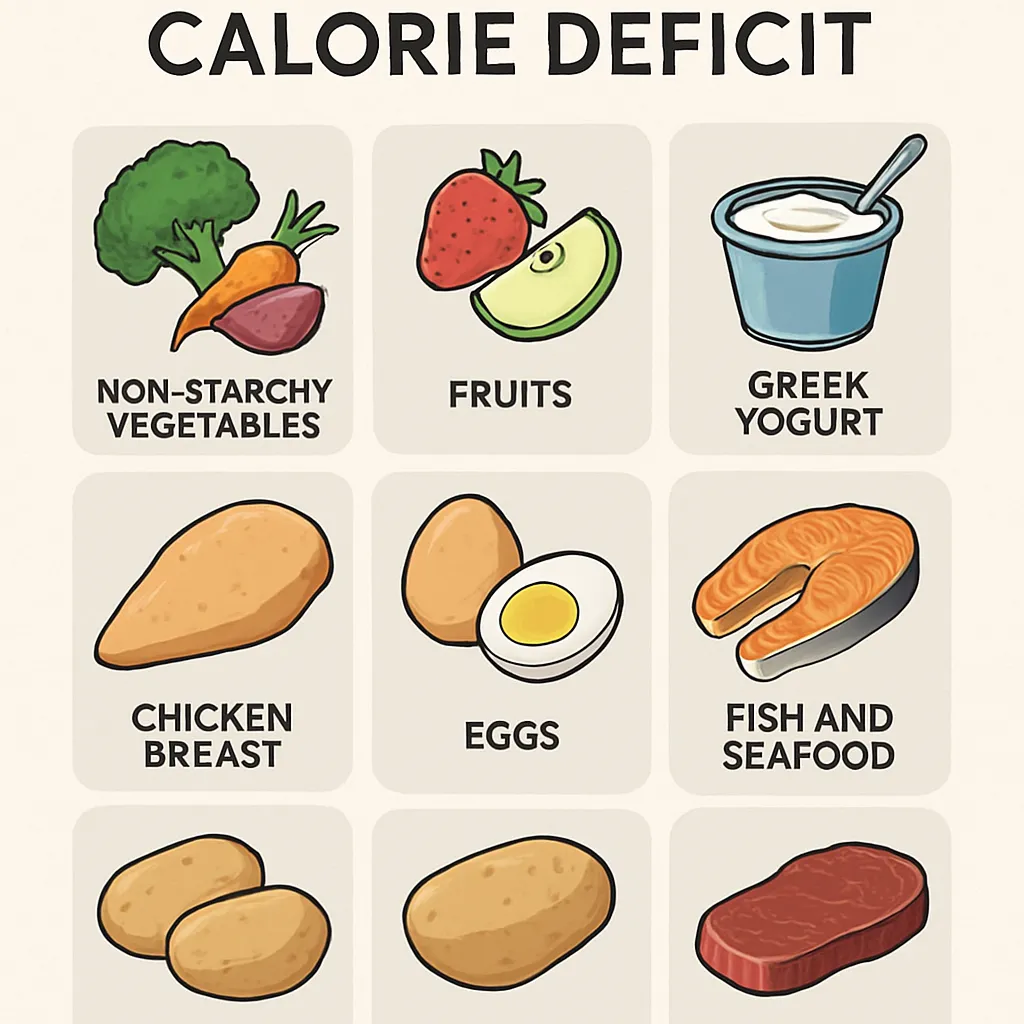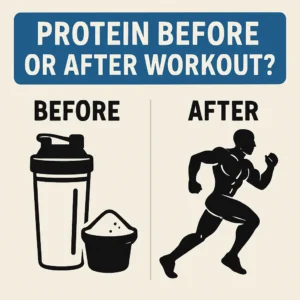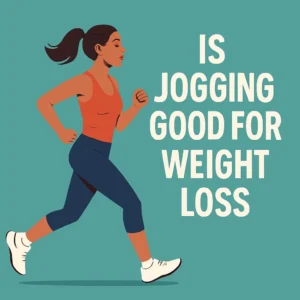Embarking on a calorie deficit diet can feel daunting, but choosing the right foods makes all the difference. This article dives deep into understanding what a calorie deficit is, the benefits it offers, and the best foods to include and avoid. Whether your goal is weight loss, improved energy levels, or better overall health, we’ve got you covered. We’ll also share a sample meal plan, practical tips, and strategies to maintain your deficit sustainably. By the end, you’ll have actionable insights and confidence to navigate your calorie deficit journey. Let’s get started on building a healthier, leaner you!
Understanding Calorie Deficit
What Is a Calorie Deficit?
A calorie deficit occurs when you consume fewer calories than your body expends over a given period. In simple terms, it means eating less energy than you burn through basal metabolic rate (BMR), digestion, and physical activity. Creating this gap forces your body to tap into stored fat for energy, leading to weight loss over time. A well-calculated calorie deficit balances sufficient nutrition with reduced intake, preventing extreme hunger or nutrient deficiencies. It’s essential to determine your daily calorie needs first, which you can estimate using BMR calculators or consulting a registered dietitian. Understanding this concept lays the groundwork for selecting foods that support your goals without sacrificing health.
Benefits of a Calorie Deficit
Adopting a calorie deficit diet offers numerous advantages beyond just weight loss. First, it encourages healthier eating habits by emphasizing whole, nutrient-dense foods over processed options. Second, gradual fat loss preserves lean muscle mass, especially when combined with resistance training. Third, reducing excess body fat can improve insulin sensitivity and lower the risk of chronic diseases like type 2 diabetes and heart disease. Fourth, the simplicity of tracking calories can boost awareness of portion sizes and macronutrient balance, fostering lifelong dietary mindfulness. Finally, achieving and maintaining a moderate calorie deficit can elevate mood and energy levels as excess weight is shed. The key is to create a sustainable deficit—typically 500 to 750 calories per day—for steady progress without undue stress.
- Promotes sustainable weight loss and minimizes muscle loss.
- Improves metabolic health and reduces chronic disease risk.
- Enhances dietary awareness and portion control skills.
- Fosters long-term behavior change and healthy eating habits.
- Boosts energy levels and supports better sleep quality.
Foods to Eat for a Calorie Deficit
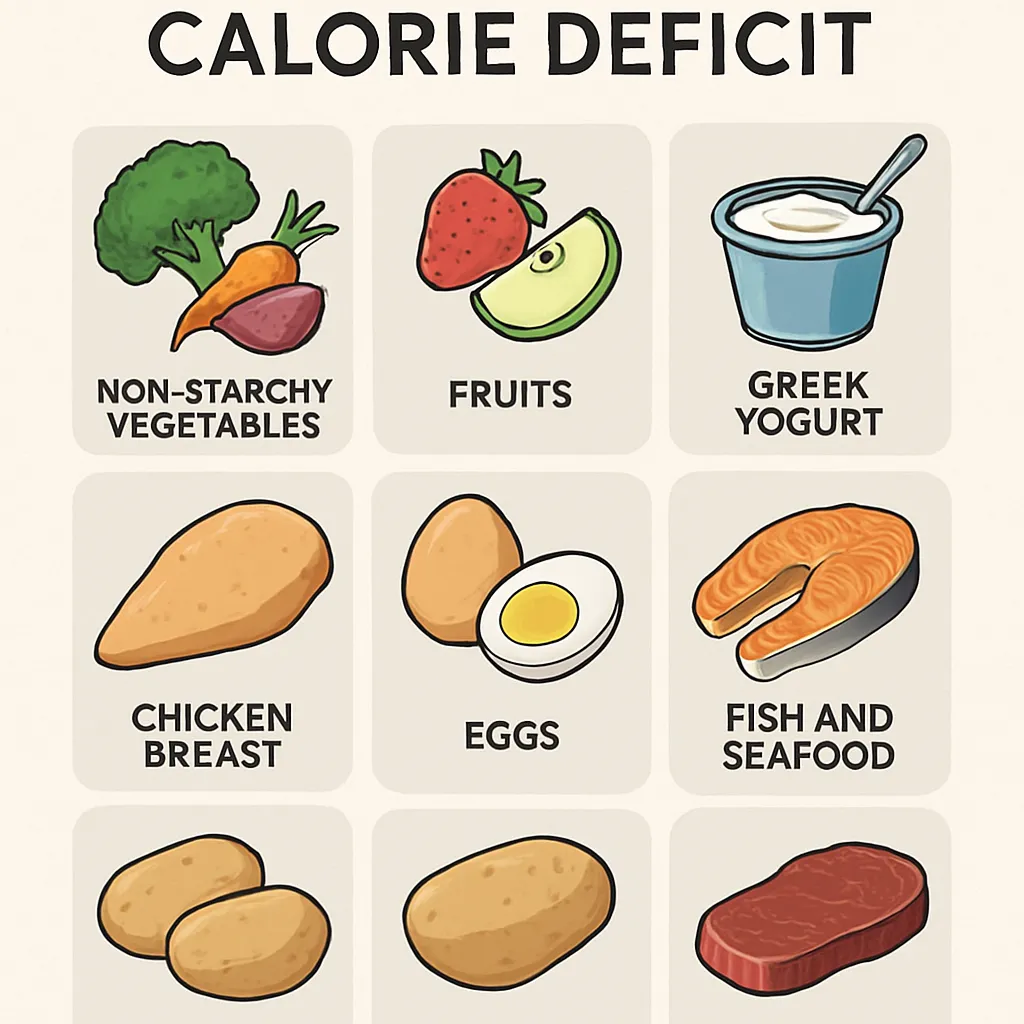
High-Fiber Foods
High-fiber foods are essential on a calorie deficit diet because they add bulk to your meals without excess calories. Fiber slows digestion, promoting feelings of fullness and reducing overall calorie intake. Examples include whole grains like oats, barley, and quinoa, as well as legumes such as lentils, chickpeas, and black beans. Incorporating fiber-rich vegetables—broccoli, Brussels sprouts, cauliflower—and fruits—apples, pears, berries—also boosts satiety and provides vital nutrients. Consuming at least 25–30 grams of fiber daily supports digestive health and helps stabilize blood sugar levels. For variety, experiment with chia or flax seeds in smoothies or Greek yogurt, which can elevate your fiber intake with minimal added calories.
Lean Proteins
Lean proteins are a cornerstone of any effective calorie deficit diet, as they preserve muscle mass and support recovery. Protein has the highest thermic effect of food (TEF), meaning it requires more energy to digest and therefore burns extra calories. Opt for chicken breast, turkey, lean cuts of pork and beef, and fish like cod, tilapia, and salmon. Vegetarian sources include tofu, tempeh, edamame, and low-fat dairy such as cottage cheese or Greek yogurt. Aim for 1.2–1.6 grams of protein per kilogram of body weight daily, adjusting based on activity levels. Protein-packed salads, stir-fries, and omelets are excellent ways to incorporate these foods into meals seamlessly.
Low-Calorie Vegetables
Low-calorie vegetables are your allies when striving for a calorie deficit, offering volume, fiber, and essential micronutrients. Leafy greens—spinach, kale, arugula—come with virtually no guilt, filling half your plate for mere tens of calories. Cruciferous vegetables—cabbage, cauliflower, broccoli—boast high fiber and water content, further promoting satiety. Other great options include zucchini, cucumbers, bell peppers, and celery. These veggies can be eaten raw, steamed, roasted, or blended into soups and sauces. Experiment with vegetable noodles or cauliflower rice to replace higher-calorie grains, satisfying hunger with minimal caloric burden while delivering vitamins A, C, and K.
Fruits That Aid in Weight Loss
While fruits contain natural sugars, many are still suitable for a calorie deficit diet due to their fiber and water content. Berries—strawberries, blueberries, raspberries—are lower in sugar and high in antioxidants, making them a top choice. Grapefruits have been linked to improved insulin resistance and appetite control. Apples and pears, when eaten with the skin, deliver both soluble and insoluble fiber. Citrus fruits—oranges, mandarins—provide vitamin C and volume per calorie, which can curb sweet cravings. Bananas and mangoes, though slightly higher in sugar, can be enjoyed in moderation, especially when paired with protein sources like Greek yogurt or nut butter to slow sugar absorption.
Foods to Avoid
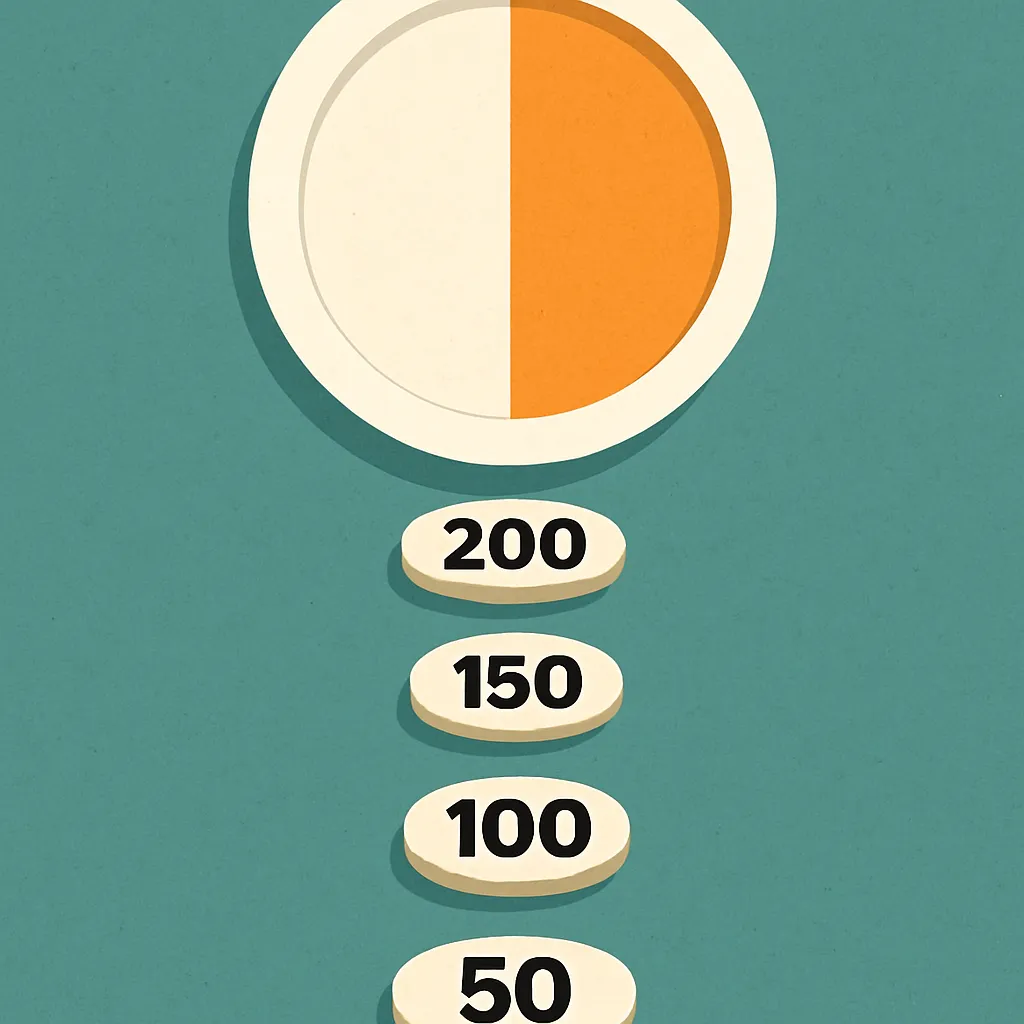
High-Calorie Foods
Certain foods should be limited or avoided on a calorie deficit diet because they pack many calories into small portions without providing lasting satiety. High-calorie foods include fried items, rich sauces, creamy dressings, and baked goods like pastries and cookies. Nuts and seeds, while nutritious, are energy-dense and should be portioned carefully—stick to a small handful per serving. Full-fat dairy cheeses and butter add flavor but can sabotage your calorie targets if used liberally. Identifying hidden calorie sources, like oils in cooking or sugar in condiments, helps you make better swaps. Opt for lighter preparations—grilled instead of fried, vinaigrette instead of cream-based sauces—to keep calories in check.
Sugary Drinks and Snacks
Liquid calories often fly under the radar, and sugary drinks can significantly derail your calorie deficit efforts. Sodas, fruit juices, sweetened coffees, and energy drinks deliver a high sugar load without inducing fullness. Snack foods like candy bars, chips, and granola bars similarly offer little nutritional value relative to their caloric content. Even “healthy” bars can be calorie bombs if they contain added sugars or thick nut butters. Replace sugary beverages with water, sparkling water, or unsweetened tea. When craving a snack, reach for whole fruit, air-popped popcorn, or a small portion of hummus with veggies for a satisfying, lower-calorie alternative.
Sample Meal Plan for Calorie Deficit
Creating a structured meal plan removes guesswork and helps you stay within your calorie goals. Below is a sample day that balances macronutrients, emphasizes whole foods, and totals roughly 1,500–1,600 calories. Adjust portion sizes to fit your individual calorie needs—this plan is a template, not a one-size-fits-all solution.
| Meal | Example Foods | Approx. Calories |
|---|---|---|
| Breakfast | Oatmeal with berries and chia seeds; black coffee | 350 |
| Mid-Morning Snack | Greek yogurt with sliced apple | 150 |
| Lunch | Grilled chicken salad (mixed greens, tomato, cucumber, vinaigrette) | 400 |
| Afternoon Snack | Carrot sticks with hummus | 150 |
| Dinner | Baked salmon, quinoa, steamed broccoli | 500 |
| Total | 1,550 | |
Breakfast Options
Kick-start your day with balanced meals that combine complex carbohydrates, lean protein, and healthy fats. Overnight oats topped with berries and a sprinkle of chopped nuts is an easy, grab-and-go choice. Vegetable omelets made with egg whites and spinach are low calorie but high in protein. Whole-grain toast with avocado and a poached egg adds fiber and healthy fat. Smoothies blending Greek yogurt, frozen fruit, and a handful of spinach deliver nutrients in a portable form. Finally, high-protein pancakes made from oat flour and cottage cheese can satisfy sweet cravings without excess sugar. These options keep you full and energized until lunch.
Lunch Ideas
Lunch should fuel your afternoon without causing post-meal slumps. Salads are versatile: start with a base of leafy greens, add a lean protein like turkey or tuna, and top with colorful vegetables. Grain bowls featuring brown rice or farro, roasted vegetables, and a protein source offer a well-rounded meal. Wraps made with whole-grain tortillas, lean proteins, and plenty of vegetables are easy to pack. For a warm option, vegetable and bean soups are high in fiber and low in calories. Don’t forget to include a small side of fruit or a handful of nuts to round out the meal and prevent late-afternoon hunger.
Dinner Suggestions
Dinner can be both satisfying and calorie-conscious by focusing on lean proteins and vegetables. Baked or grilled fish seasoned with herbs served alongside steamed greens is simple and nutritious. Stir-fries using lean cuts of chicken or tofu with a variety of colorful vegetables and a light sauce over cauliflower rice make for a flavorful dish. Turkey or veggie burgers wrapped in lettuce leaves instead of buns cut carbs dramatically. Slow-cooker chili with beans and lean beef packs flavor and can last for multiple meals. Finally, Stuffed bell peppers filled with quinoa, black beans, and diced tomatoes provide a balanced plate in one convenient vessel.
Snacks
Healthy snacks bridge the gap between meals and keep your metabolism humming. Choose options that provide protein or fiber to stave off hunger. Greek yogurt cups, small portions of cottage cheese, or a hard-boiled egg each deliver satisfying protein. Fresh fruit—berries, melon, or a peach—adds natural sweetness. Raw veggie sticks with salsa or guacamole offer crunch and nutrients. Air-popped popcorn seasoned with nutritional yeast is a low-calorie treat. Nuts and seeds can be eaten mindfully by pre-portioning into snack bags to avoid overeating. These snacks help you maintain energy without breaking your calorie deficit.
Tips for Maintaining a Calorie Deficit
Portion Control
Portion control is the backbone of any successful calorie deficit diet. Using smaller plates can trick your brain into feeling satisfied with less food. Measuring cups, kitchen scales, and portion-size visuals—like the “hand” method—ensure accuracy. Pre-portion snacks into containers rather than eating from a large bag or box. Track your intake via a food diary or calorie-tracking app to stay aware of hidden calories. Over time, you’ll learn to estimate portions by eye, making tracking less burdensome. Above all, slow down while eating, chew thoroughly, and pause between bites to recognize fullness cues.
Regular Exercise
Combining diet with exercise amplifies calorie burn and preserves muscle mass. Aim for a mix of cardiovascular activities—such as brisk walking, cycling, or swimming—and strength training at least two to three times per week. Interval training can boost your metabolism for hours after a workout. Incorporate NEAT (non-exercise activity thermogenesis), like taking stairs, walking during phone calls, or gardening, to increase daily calorie expenditure. Remember that recovery days and proper sleep are essential for muscle repair and sustained energy. Consistency is key; find activities you enjoy to make exercise a lifelong habit.
Staying Motivated
Maintaining motivation through a calorie deficit diet requires goal setting, accountability, and flexibility. Set SMART goals—specific, measurable, attainable, relevant, and time-bound—to track progress. Take weekly progress photos, measurements, or body fat readings rather than relying solely on the scale. Join a support group, enlist a workout buddy, or share your goals with friends and family for encouragement. Reward non-scale victories—like improved energy, better sleep, or looser clothing—to stay positive. When plateaus occur, adjust your calorie intake, switch up workouts, or take a diet break to refresh mentally and physically.
- Set clear, achievable short-term goals and celebrate milestones.
- Keep a visual progress tracker, such as a chart or journal.
- Find an accountability partner or join a supportive community.
- Allow occasional flexible “cheat” meals to prevent burnout.
- Regularly revisit and adjust your plan based on progress.
Conclusion

Sustainable Weight Loss
Achieving and maintaining a calorie deficit is both an art and a science, requiring mindful food choices, portion control, and consistent habits. By focusing on high-fiber foods, lean proteins, low-calorie vegetables, and weight-loss-friendly fruits, you’ll meet your nutritional needs while shedding excess fat. Avoiding energy-dense and sugary foods keeps you on track without feeling deprived. A well-structured meal plan and practical tips—such as portion control, regular exercise, and staying motivated—ensure your efforts are sustainable. Remember that gradual progress and flexibility lead to long-term success. Embrace the journey, listen to your body, and celebrate each step toward a healthier, leaner you.
